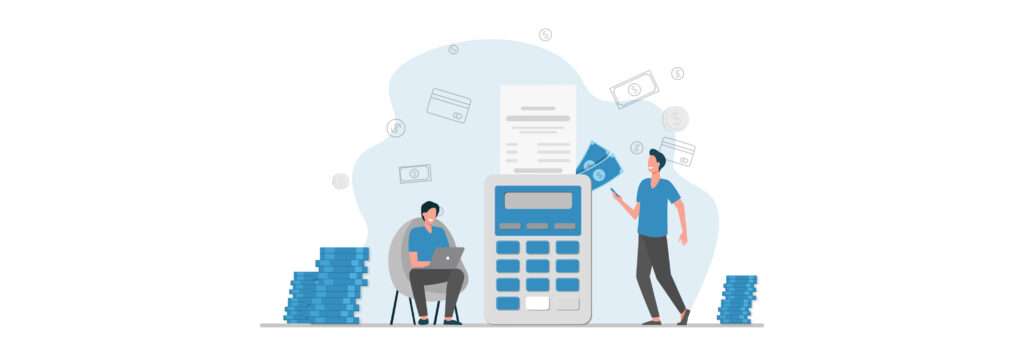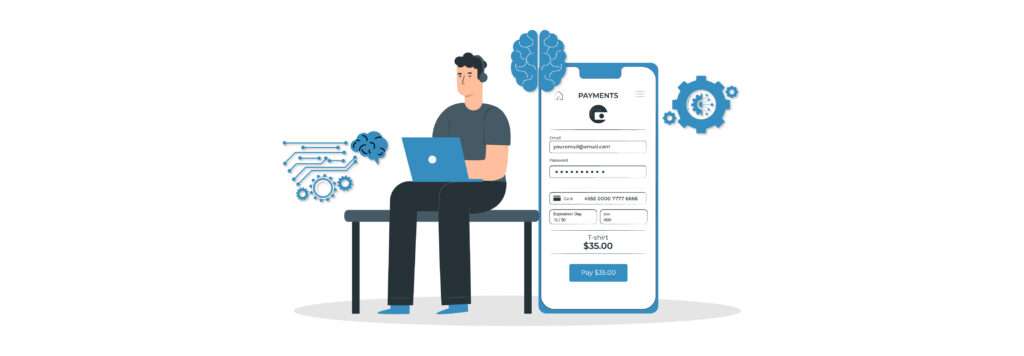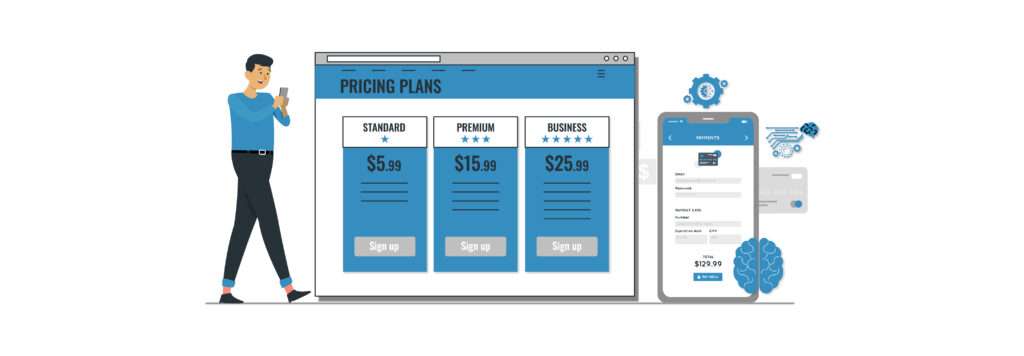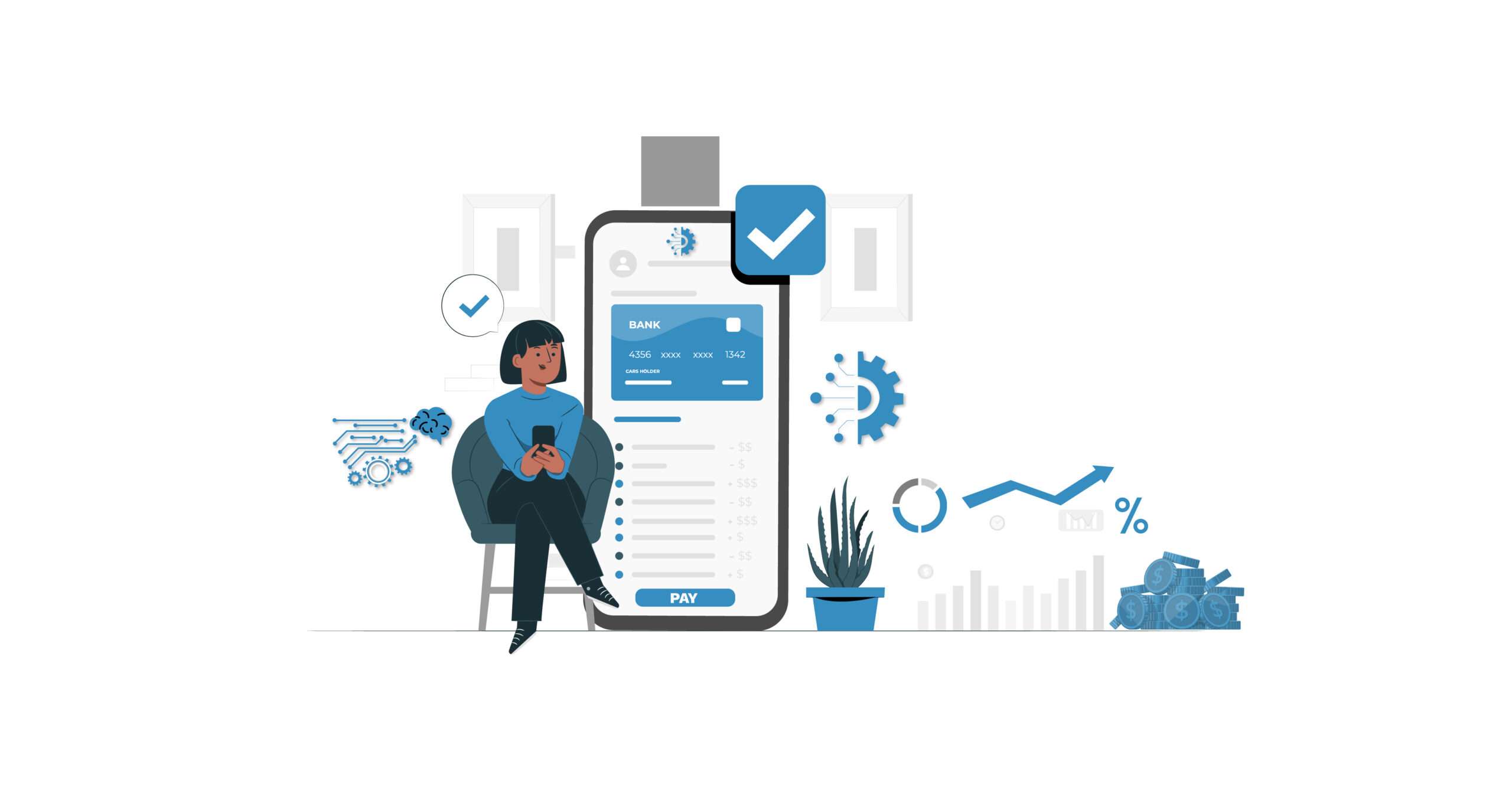Automation has become an essential tool for firms seeking to streamline their operations and remain competitive.
While it is true that every new technology investment requires both time and money, the question remains – what is the timeframe for realizing a return on investment, measured by higher revenue and cost savings? By exploring the true impact of automation on your bottom line, you can better understand the potential benefits and determine the optimal time to adopt these powerful tools.
This comprehensive discussion delves into the intricacies of accounts payable (AP) processing costs and the significant challenges posed by traditional manual methods. Moreover, it highlights the potential advantages of AP automation and sheds light on the timeline required to recuperate your investment.
 In the world of accounts payable, traditional manual processes have long been a source of labor-intensive and error-prone work. One prime example is invoice processing, which often stands out as one of the most costly and time-consuming tasks for many AP departments. If your business still relies on paper-based invoice processing methods, you’re far from alone: According to a 2021 survey, AP Today: Bottlenecks, Benchmarks, and Best Practices, over 40% of organizations still manually process invoices.
AP automation has become the go-to solution for streamlining invoice processing tasks, including entering, extracting, verifying, and routing invoices, resulting in significant time and cost savings for businesses.
However, for CFOs, accurately estimating the return on investment (ROI) of implementing AP automation remains a challenge, requiring a comprehensive understanding of the current costs involved, the potential cost savings, and the timeline required to recover the investment through cost savings. This guide utilizes real-world accounts payable data to provide you with a powerful yet straightforward model to assess the costs and benefits of implementing AP automation, enabling you to make informed investment decisions.
We will begin with a brief overview of invoice processing costs, setting the stage for a detailed exploration of the factors that go into calculating the true ROI of AP automation.
In the world of accounts payable, traditional manual processes have long been a source of labor-intensive and error-prone work. One prime example is invoice processing, which often stands out as one of the most costly and time-consuming tasks for many AP departments. If your business still relies on paper-based invoice processing methods, you’re far from alone: According to a 2021 survey, AP Today: Bottlenecks, Benchmarks, and Best Practices, over 40% of organizations still manually process invoices.
AP automation has become the go-to solution for streamlining invoice processing tasks, including entering, extracting, verifying, and routing invoices, resulting in significant time and cost savings for businesses.
However, for CFOs, accurately estimating the return on investment (ROI) of implementing AP automation remains a challenge, requiring a comprehensive understanding of the current costs involved, the potential cost savings, and the timeline required to recover the investment through cost savings. This guide utilizes real-world accounts payable data to provide you with a powerful yet straightforward model to assess the costs and benefits of implementing AP automation, enabling you to make informed investment decisions.
We will begin with a brief overview of invoice processing costs, setting the stage for a detailed exploration of the factors that go into calculating the true ROI of AP automation.
 For businesses that rely on manual invoice processing methods, significant costs are associated with labor, paper processing and storage, errors, fraud, late payment fees, and regulatory penalties. However, the implementation of accounts payable automation solutions can significantly reduce these costs.
To better understand the impact of invoice processing costs on your business, it is helpful to use a formula that accounts for all relevant factors: Total invoice processing cost = labor + paper processing and storage + errors + fraud + late payment fees + regulatory penalties.
Furthermore, slow invoice processing can have a detrimental effect on your vendor relationships. Late payments can disrupt a vendor’s cash management process, resulting in cash flow problems and damaged relationships. If payment delays continue, vendors may refuse to do business with your company. Finding a new vendor that can supply quality products at reasonable prices can be a challenging task, and your business may face difficulties in meeting customer demand while searching for a new vendor.
For businesses that rely on manual invoice processing methods, significant costs are associated with labor, paper processing and storage, errors, fraud, late payment fees, and regulatory penalties. However, the implementation of accounts payable automation solutions can significantly reduce these costs.
To better understand the impact of invoice processing costs on your business, it is helpful to use a formula that accounts for all relevant factors: Total invoice processing cost = labor + paper processing and storage + errors + fraud + late payment fees + regulatory penalties.
Furthermore, slow invoice processing can have a detrimental effect on your vendor relationships. Late payments can disrupt a vendor’s cash management process, resulting in cash flow problems and damaged relationships. If payment delays continue, vendors may refuse to do business with your company. Finding a new vendor that can supply quality products at reasonable prices can be a challenging task, and your business may face difficulties in meeting customer demand while searching for a new vendor.
 Having a grasp of the various elements that make up invoice processing costs, we can now construct a basic framework to determine the potential cost reductions that can be achieved by adopting AP automation. The most significant and quantifiable gain from automation comes from labor cost savings, so we will use it as a starting point for the model.
Having a grasp of the various elements that make up invoice processing costs, we can now construct a basic framework to determine the potential cost reductions that can be achieved by adopting AP automation. The most significant and quantifiable gain from automation comes from labor cost savings, so we will use it as a starting point for the model.
 The majority of AP automation providers have pricing models based on a per-invoice or flat-rate system. Apart from this, they might also charge extra for implementation, training, integrating with ERP and accounting systems, and additional features like dashboards and vendor portals. The pricing system may also include volume discounts as the number of invoices processed increases.
The majority of AP automation providers have pricing models based on a per-invoice or flat-rate system. Apart from this, they might also charge extra for implementation, training, integrating with ERP and accounting systems, and additional features like dashboards and vendor portals. The pricing system may also include volume discounts as the number of invoices processed increases.
What is the true cost of AP automation?
 In the world of accounts payable, traditional manual processes have long been a source of labor-intensive and error-prone work. One prime example is invoice processing, which often stands out as one of the most costly and time-consuming tasks for many AP departments. If your business still relies on paper-based invoice processing methods, you’re far from alone: According to a 2021 survey, AP Today: Bottlenecks, Benchmarks, and Best Practices, over 40% of organizations still manually process invoices.
AP automation has become the go-to solution for streamlining invoice processing tasks, including entering, extracting, verifying, and routing invoices, resulting in significant time and cost savings for businesses.
However, for CFOs, accurately estimating the return on investment (ROI) of implementing AP automation remains a challenge, requiring a comprehensive understanding of the current costs involved, the potential cost savings, and the timeline required to recover the investment through cost savings. This guide utilizes real-world accounts payable data to provide you with a powerful yet straightforward model to assess the costs and benefits of implementing AP automation, enabling you to make informed investment decisions.
We will begin with a brief overview of invoice processing costs, setting the stage for a detailed exploration of the factors that go into calculating the true ROI of AP automation.
In the world of accounts payable, traditional manual processes have long been a source of labor-intensive and error-prone work. One prime example is invoice processing, which often stands out as one of the most costly and time-consuming tasks for many AP departments. If your business still relies on paper-based invoice processing methods, you’re far from alone: According to a 2021 survey, AP Today: Bottlenecks, Benchmarks, and Best Practices, over 40% of organizations still manually process invoices.
AP automation has become the go-to solution for streamlining invoice processing tasks, including entering, extracting, verifying, and routing invoices, resulting in significant time and cost savings for businesses.
However, for CFOs, accurately estimating the return on investment (ROI) of implementing AP automation remains a challenge, requiring a comprehensive understanding of the current costs involved, the potential cost savings, and the timeline required to recover the investment through cost savings. This guide utilizes real-world accounts payable data to provide you with a powerful yet straightforward model to assess the costs and benefits of implementing AP automation, enabling you to make informed investment decisions.
We will begin with a brief overview of invoice processing costs, setting the stage for a detailed exploration of the factors that go into calculating the true ROI of AP automation.
Associated costs of invoice processing
 For businesses that rely on manual invoice processing methods, significant costs are associated with labor, paper processing and storage, errors, fraud, late payment fees, and regulatory penalties. However, the implementation of accounts payable automation solutions can significantly reduce these costs.
To better understand the impact of invoice processing costs on your business, it is helpful to use a formula that accounts for all relevant factors: Total invoice processing cost = labor + paper processing and storage + errors + fraud + late payment fees + regulatory penalties.
Furthermore, slow invoice processing can have a detrimental effect on your vendor relationships. Late payments can disrupt a vendor’s cash management process, resulting in cash flow problems and damaged relationships. If payment delays continue, vendors may refuse to do business with your company. Finding a new vendor that can supply quality products at reasonable prices can be a challenging task, and your business may face difficulties in meeting customer demand while searching for a new vendor.
For businesses that rely on manual invoice processing methods, significant costs are associated with labor, paper processing and storage, errors, fraud, late payment fees, and regulatory penalties. However, the implementation of accounts payable automation solutions can significantly reduce these costs.
To better understand the impact of invoice processing costs on your business, it is helpful to use a formula that accounts for all relevant factors: Total invoice processing cost = labor + paper processing and storage + errors + fraud + late payment fees + regulatory penalties.
Furthermore, slow invoice processing can have a detrimental effect on your vendor relationships. Late payments can disrupt a vendor’s cash management process, resulting in cash flow problems and damaged relationships. If payment delays continue, vendors may refuse to do business with your company. Finding a new vendor that can supply quality products at reasonable prices can be a challenging task, and your business may face difficulties in meeting customer demand while searching for a new vendor.
-
Labor costs
-
Paper processing and storage costs
-
Human errors and duplicate invoices
-
Fraud prevention
-
Dealing with late fees
-
Regulatory compliance
Moving to AP automation
 Having a grasp of the various elements that make up invoice processing costs, we can now construct a basic framework to determine the potential cost reductions that can be achieved by adopting AP automation. The most significant and quantifiable gain from automation comes from labor cost savings, so we will use it as a starting point for the model.
Having a grasp of the various elements that make up invoice processing costs, we can now construct a basic framework to determine the potential cost reductions that can be achieved by adopting AP automation. The most significant and quantifiable gain from automation comes from labor cost savings, so we will use it as a starting point for the model.
Building the cost model for Accounts Payable automation
The basis for this cost model for AP automation is actual survey data on accounts payable processes, their efficiency, and costs. The initial step of the model involves determining the current volume of invoices processed by companies.Step 1: Estimating invoice processing efficiency
Based on accounts payable benchmarking research by the American Productivity and Quality Center (APQC), an average full-time employee (FTE) in accounts payable processes 10,853 invoices per year. Businesses that use manual data entry processes only process 6,082 invoices per year per FTE, while businesses with fully automated accounts payable processes handle 23,333 invoices per year per FTE. You can estimate your company’s invoice processing efficiency by dividing the total number of invoices processed by your AP team each year by the number of hours employees spend on invoice processing.Step 2: Calculate the labor cost per invoice (manual process)
To estimate the labor cost of processing each invoice manually, you should calculate the number of invoices that can be processed per hour by an FTE and the hourly cost of an FTE, including salary and benefits. Assuming a standard 2,080 hours of work per year for an FTE, you can calculate both figures as follows: Invoices per hour = Annual number of invoices processed / 2,080 hours Cost per hour = Annual FTE wage and benefits / 2,080 hours For this cost model, we will use Salary.com data to estimate annual FTE costs. Invoices per hour (manual process) = 6,082 / 2,080 = 2.92 invoices per hour per FTE Cost per hour (manual or automated) = $47,162 / 2,080 = $22.67 per hour You can multiply the number of hours spent on invoice processing per year by the cost per hour to get a rough estimate of how much your company is spending on invoice processing annually. Alternatively, you can divide the cost per hour by the number of invoices processed per hour to determine the per-invoice cost. Based on our model, the per-invoice cost for manual processing is: Per-invoice cost (manual process) = (cost per hour) / (invoices processed per hour) = $22.67 / 2.92 = $7.75 This metric can serve as a benchmark for the average cost of processing invoices manually.Step 3: Estimate time and labor cost savings with automation
To estimate the time and labor cost savings from automation, we can use the best-case invoice processing data from APQC to calculate the potential efficiency gains. This is a platform-agnostic estimate, assuming that any automation platform implemented will match the top-performing companies. Using the best-case figure of 23,333 invoices per FTE per year, we can calculate the per-hour efficiency of each FTE with automation by dividing the number of invoices processed by the number of FTE hours per year: Invoices per hour with automation = 23,333/ 2,080 = 11.22 Based on this data, automation can make each FTE 384% more efficient at invoice processing. The increase in invoices processed per hour is equivalent to a 384% improvement, calculated as (11.22 / 2.92) = 3.84.Cost to process 6,000 invoices: Manual vs. fully automated process
Using the data above, we can calculate the total processing cost for a business that needs to process 6,000 invoices annually using a manual process versus a fully automated process.Cost using manual processing
You can also calculate the total cost as: ($7.75 cost per invoice) X (6,000 invoices) = $46,526.14Cost using AP automation
The total processing cost using automation is far lower: You can also calculate the total cost as: ($2.02 cost per invoice) X (6,000 invoices) = $12,127.54 The cost savings recognized by switching from a manual to a fully automated system is $34,398.60, or 74%.Cost to process more annual invoices: Manual vs. fully automated process
The cost savings are even greater for businesses processing more invoices. An easy way to calculate the benefit is to use cost savings per invoice, which is: ($7.75 manual cost – $2.02 automated cost) = $5.73 cost savings per invoice It’s important to note that the labor cost analysis mentioned here only accounts for the AP processor. The overall savings from AP automation also encompass:- Paper processing and storage costs
- Reduction in errors and potential fraud
- Avoidance of late payment fees
- Mitigation of regulatory penalties
- Improvement in vendor relationships
Step 4: Assessing the cost of AP automation
When deciding on an AP automation solution, you should evaluate both the pricing and implementation costs involved.Pricing models for Accounts Payable automation
 The majority of AP automation providers have pricing models based on a per-invoice or flat-rate system. Apart from this, they might also charge extra for implementation, training, integrating with ERP and accounting systems, and additional features like dashboards and vendor portals. The pricing system may also include volume discounts as the number of invoices processed increases.
The majority of AP automation providers have pricing models based on a per-invoice or flat-rate system. Apart from this, they might also charge extra for implementation, training, integrating with ERP and accounting systems, and additional features like dashboards and vendor portals. The pricing system may also include volume discounts as the number of invoices processed increases.




